#cubism explained
Explore tagged Tumblr posts
Text
🎨 Fun Art Styles Explained for Kids 🎉
💡 Alice’s Silly Genius Takeaways: 🎤 A Message to the World from Alice (and Fluffernutter!): Exploring Different Art Styles and Famous ArtistsDownload
#abstract art fun#alice blog#Alice’s Whimsical Wonderworks#Ariel art paper#art#art activities for girls#art education for families#art for kids#art museum for fun#book-review#children’s art adventure#cubism explained#drawing with imagination#expressive art for children#family#fiction#Fluffernutter bunny#Fluffernutter’s Art Patrol#Frida Kahlo for kids#glittery learning blog#homeschool art ideas#imaginative kids storytelling#impressionism for kids#kids art blog#kids creative learning#learning about art#Leonardo da Vinci facts#love#Pablo Picasso fun facts#silly art blog
0 notes
Text
Different art movements as the Marauders & Co ✨️
James — Romanticism
Peter — Classical Realism
Sirius — Renaissance
Remus — Neo-expressionism
Lily — Impressionism
Mary — Rococo
Marlene — Fauvism
Emmeline — Futurism
Alice — Minimalism
Frank — American Realism
Dorcas — Gothic Art
Pandora — Surrealism
Evan — Bauhaus
Barty — Expressionism
Bellatrix — Baroque
Andromeda — Dadaism
Narcissa — Art Deco
Regulus — Neoclassicism
Xenophilius — Cubism
Yes, I am a massive art history nerd. And yes, I am willing to explain my reasoning behind these <3 Also should I assign them specific artists ??? Perhaps.
#marauders#the marauders era#mwpp era#mwpp#the marauders#the valkyries#james potter#remus lupin#sirius black#lily evans#peter pettigrew#mary macdonald#marlene mckinnon#emmeline vance#alice fortescue#frank longbottom#dorcas meadowes#pandora rosier#pandora lovegood#evan rosier#barty crouch jr#bellatrix black#bellatrix lestrange#narcissa malfoy#narcissa black#andromeda tonks#andromeda black#xenophilius lovegood#xenophilius malfoy#regulus black
72 notes
·
View notes
Text
Explaining my Bill human redesign
Cw: bright colours
.
.
.


I wanted his human form to remain close to the original source, including the ‘’official” human design, so proportionally I wanted him to keep his triangular figure
His body beneath his coat and his tie are meant to echo to his pyramidal form. He has no tongue in his mouth, however he does have multiple other limbs at different spots of his body.
His hat has the interrogation marks to echo to the Mystery Shack.
Inside his coat are various patterns that are meant to remind of the portal.
When it comes to the colours I wanted to keep them very saturated to remain in his theme, he's made of colourful shapes, that is why I wanted to opted for the cubist art style as it embodied It perfectly, with a fauvist inspiration as well, i think, however, that Bill would also like Bauhaus in a way. But cubism also has the particularity of working fragmentation and multiplications of perspectives in plans, which would mean making a 3d object plan, which is perfect for Bill that would in that case want to resemble something human but failing at understanding what a body works beyond the 2 dimensional world.
Despite it his necktie is made of a bow that *feels* 3 dimensional, but however it still is see-through which is still a way to work the multiplication of plans.
His main colours are divided in 3 distinct sections, Blue and red are prominent to echo to his parents and then yellow is more present in him overall.
His hands are charred at its fingertips. I took inspiration from that one theory, where his arms would have gotten darker overtime through the flames he creates when making pacts.
His left is more prominently red than the other that's more blue. The idea is to reflect the ideal of a mother and father side inside of him, at least the way he perceives it in humans.
This form has no definitive proportions so his limbs can be bigger or smaller as he wishes.
The idea is he cannot go beyond a mirror, he uses a mirror the same way he'd be trapped inside a painting, in this AU Ford would have kept him hung at the wall of his laboratory around his shrine.
The 1 2 3 on his hat is a little detail I added. Yes, it is about his number of sides, that is also why he only has 3 strands of hair.
Video format
#art#artists on tumblr#my art#my artwork#digital doodle#digital artist#digital drawing#digital painting#digital art#digital illustration#gravity falls bill#gravity falls#gravity falls bill cipher#bill cipher#bill#bill human#redesign#human redesign#meme redraw#abstract art#I was heavily inspired by the portraits of Dora Maar by Picasso#hate this guy btw#gravity falls fanart#fanart#bill cipher fanart#bill fanart#✩Past3l_Clown's art✩
31 notes
·
View notes
Note
Hello! Sorry for the bother but do you know how the live 2D files of Tokyo debunker is accessed? I'm like so hyped about this help- Let me know if you could answer for me! THANK YOUUUU
I'm on the way to work so I'll just copypaste what i sent to someone else over DMs. Lmk if you run into any trouble, but it'll be like 8+ hours before I get to it
Hiya! No need to apologize for the sudden message. I just woke up so sorry for the wait!
I can explain the process for you and get screenshots to hopefully help out, and if you have any problems with it you can let me know!
You'll need:
An android phone and a way to transfer files between your phone and computer(a wire is preferable in my experience)
I think you need a windows or linux computer? I'm not sure if the necessary programs will work on mac.
AssetStudioGUI https://github.com/Perfare/AssetStudio
UnityLive2DExtractor https://github.com/Perfare/UnityLive2DExtractor/releases/tag/v1.0.7
First you'll need to transfer the game files to your computer. I assume you already have that part done so I won't walk you through it.
Next go into AssetStudioGUI and go into 'Debug' and turn off 'Show error message' to save yourself some headache
Now you need to open the folder with the files in AssetStudio. This will probably take a long time. Get yourself something to eat or play a game or read or something!
Once everything is loaded you'll need to find one of the live2d files. For tokyo debunker the easiest way to do this is just to go to "Filter Type" and filter to "Texture2D". I don't know the file structure or naming convention for Twst, but the image you're looking for should look kind of like this
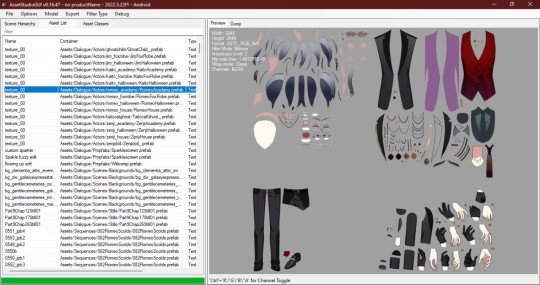
Right click and choose "Show original file".
Copy the FOLDER that this file is in to another folder.
If you haven't already extracted L2DExtractor, do that now. You should have these files.
Open the L2DExtractor FOLDER in another tab or window. Then drag the folder that you copied before to "UnityLive2DExtractor.exe" in the UnitLive2DExtractor folder that you have in a separate window. (You can also copy it and right click→paste it INTO THE EXE FILE if dragging is difficult.)

You should get a command prompt(the black box with text in it) with the name of the asset in it. Wait until it says "Done!" Close the command prompt.
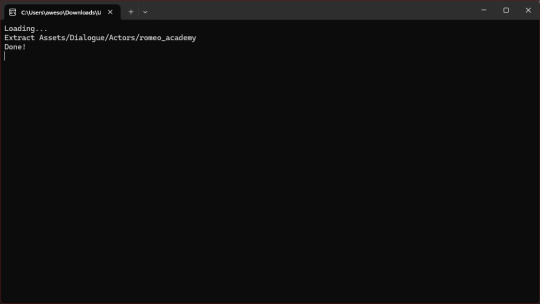
Go to the folder that you put the asset folder in. You should now have a new folder named "Live2DOutput". That will have a folder in it. Go into the folder until you find the asset you just extracted.
You should now have the .moc3 file, textures, and motions! You can open the moc3 file with Live2D's Cubism Viewer which you get off of their website. It's free.

If you don't have the expressions in there you'll have to extract them separately! I always have to extract them separately and I'm not sure why, but it's easy enough once you know where they are.
Open AssetStuido back up and change your filter to "MonoBehavior"
Search "exp3"
Order by Container and find the character character and outfit you just extracted(in this case I just need to find "romeo_academy". The name of the asset you extracted should be in the container path.
Highlight only the .exp3 files that go to this asset.

Go to "Options→Export options"
Change "Group exported assets by" to "Do not group". If you want to do any datamining in the future you're probably going to want to change this back to "container path" or else you'll just get a ton of files in one folder, so don't forget you did this! If you're only using assetstudio to get the l2d files however you can leave it as is.

Press "OK"
Right click on one of your highlighted exp3 files
Choose "Export selected assets"
Navigate to the folder with the moc3 file in it. Make a new folder. The name doesn't matter because you'll have to manually move the expressions into l2d every time, but I just use "expressions" for simplicity
Extract the exp3 files into here.
Once they're extracted you can select them all at once and drag them into the Cubism Viewer window OF THE CORRECT CHARACTER. This will instantly import all of the expressions.

You're done! You can view and play with them all you want. But you'll have to do every character individually and then export their expressions separately.
Hope that helps. If you need anymore help let me know.
#ridiculous-reina#danie yells answers#do i have a tag for explaining this stuff? idr.#datamining cw#just so it'll come up if i search datamining or something ugh
20 notes
·
View notes
Text
I have had many years of technical art training but I'm super into art that looks "low skill" to the untrained eye. I bought a print of a painting in that style and I was psyched and I showed my mom and sister and they were like "Well I hope you didn't pay much for it..."
I want to try to explain the appeal: So if you want to draw/paint true-to-life naturalism, there's not many ways you can make it look distinctive, since real life kinda only appears one way. Plus with the prevalence of cameras, the closer to real life your art looks, unfortunately the less interesting it gets! I had a professor who painted super high-detail realistic vehicles, and seeing the paintings in person was impressive and you could tell it took enormous mastery! But on a postcard, it just looked like a photograph and people totally passed over it!
This viral contest demonstrates this well:

But you can kinda see why the first picture is the clear winner! We've seen skillful drawings like the second one all the time, and frankly, it's just not that interesting. But the first one is an entirely novel depiction vaguely resembling a "dog." It's super memorable and still captures the happy energy of the dog it was drawn from!
It’s also very common for artists to choose this style deliberately and people assume their work was done by a child because the technical skill isn't "obvious." But you can tell it's professional from things like 1) The composition of the entire canvas is considered and the whole space is utilized, 2) Evidence of knowing actual perspective/anatomical/lighting rules, 3) Careful control of colors and layering of colors. So basically, intentionality throughout.
Also think about the Impressionism and Post-Impressionism movements and similar later genres like Cubism, Fauve, Modernism, and Expressionism: With the invention of the camera (but not the only contributing factor), Impressionism started breaking away from naturalism* (*"realism" is its own genre and DOES NOT just mean "true-to-life representation" so I'm not using that word). Before, painters would hide the brush strokes with careful blending to create a powerful "trompe l'oeil" effect. It's like a magic trick that it looks like you can grab the fruit right off the plate, but it's not really there! (C'est ne pas une pipe... ahem)
But the magical thing about Impressionism (and especially Post-Impressionism) is that you can clearly tell it's a painting; they don't hide the strokes at all. Sometimes, they -emphasized- them with thick texture (called "impasto"). And yet, when you back up to take in the entire painting, it all falls into place and again the illusion of a real place is there, but the tension between the medium and the perceptual illusion is even stronger! Our mind perceives the physical paint AND the scenery at the same time.
So what about the "childlike" paintings that don't fool the eye at all? Well, isn't it so cool when you see a familiar thing recreated in a way that you've never seen before, and yet it's still recognizable? And if the artist was skillful with composition/balance/color coordination, it's still pleasing to look at regardless if it's "lifelike?"
When it comes to art (and everything, really), don't judge it based so much on what you EXPECT it to be, but what it IS. The artist CHOSE this style; why? What feeling do you get looking at it? How would the feeling be different if the artist chose a different style? Would it even be the same "message," if there is an intended message? If the art gives you vibes of "the artist is just pretentious and wanted money for minimal effort," how can you TELL? Is there some context you might be missing? Or, is the art meant to speak for itself?
The greatness of art is its INFINITE POSSIBILITIES! But we can't explore infinity if we're locked in to a small set of rules that govern what "good art" is. Every time we think we've nailed down the constant elements that make good art, someone breaks them and it's STILL GOOD and we're like "Damn it! Why does that work!!" and our paradigm expands!
Anyways I'm thinking of starting a blog where I can just ramble about this forever
#art history#impressionism#artistic expression#painting#modern art#long post#art style#post impressionism#art lessons
10 notes
·
View notes
Text
Ok nobody cares but my first major experience with:
Art - drew shopping centres and imaginary transport networks and like sleek car designs as a kid and then I was mostly into crayon pencils and watercolours and I did a watercolour of a wood pulp mill and they hung it in the mill dead. Where is it now? Then I got into photoshop and collage in high school and like digital photography but I still drew a lot. But artists I got into the most in high school were like kandinsky, italian futurism, cubism even I guess like guernica, ummm josephine pryde. And my high school art teacher is like a professional abstract photographer kinda thing and like exhibits at Hong Kong Art Basel and the same in Miami. Dead as a chile. And slightly a pedo. But kinda served complexity explaining the Bill Henson controversy and like standing up for freedom of expression like Australia is so like nanny state they like censor art. The fight I had with a librarian over this once when I was 17. Tea. I can't even think who else I guess Jon Rafman honestly. And I legit ate tf out of art. I took this really fierce photo of tomatoes on a blue cloth once it was giving like pop photorealism tea. I'll see if I can find my portfolio wait... Spiral this was supposed to be a short categories post
9 notes
·
View notes
Text
Mary Ann Skuttle and Gorgug Thistlespring but make it cubism.
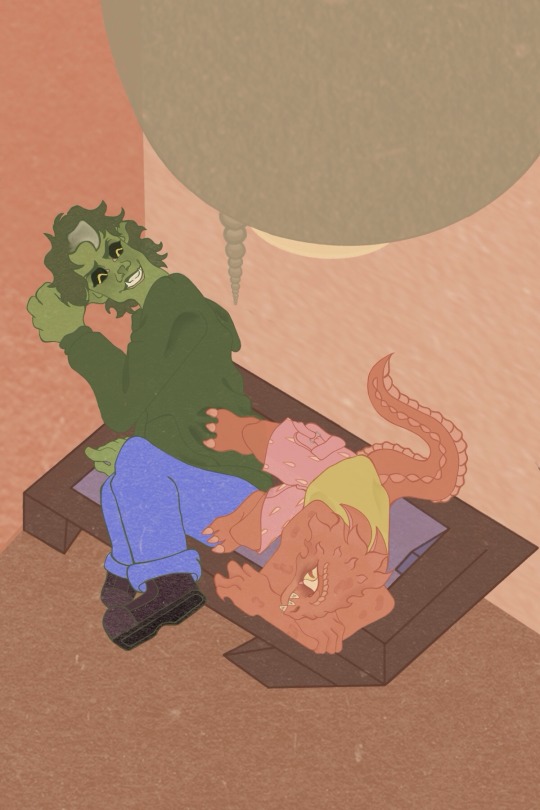
Technically I think I should label this ‘wip’ because I got too excited to post my first digital piece to finish drawing their stuff on the floor.
I saw one of those impossible squares and thought “that would be a fun concept to turn into one of Mr. Skuttle’s benches in my style”. Then it turned into an entire piece of Mary Ann and Gorgug hanging out on the bench. You can’t even really see it anymore, their bodies are taking up most of the surface lol.
Anyway Mary Ann would definitely be the sort of person to make a face before sitting on something in a weird way and then when you ask them if their stomach hurts or something they say no and refuse to explain themselves. Then if you’re on good/close terms they decide to play one sided footsie with you for like an hour.
41 notes
·
View notes
Text
Xikers Full Storyline Explained - BONUS 4
Masterlist
HOUSE OF TRICKY #1
On December 23rd, 2024, a little animated video was released which gives us another glimpse into the world of TRICKY and its process of recruiting people to become pieces in its games:
We open on a shot of a funky little doorway decorated with a black-and-white checkered curtain and a funky little plant
The doorway seems to be floating in a cloudy sky and providing a passage to the stars

As we linger here, a little flue orb appears, it's appearance familiar - it's a spirit orb, the non-human form of a dokkaebi
And it's soon joined by the familiar hands of the little chaos-creature that is TRICKY, who is now greeting us from beyond the doorway (voiced by your friendly neighborhood KQ artist Maddox)

TRICKY laughs at us, telling us that, today, it's not about who IT is, but about who WE (or rather the protagonists of this video) are
As it talks, a human appears in the doorway before the hands return and grab them by the shoulders, telling them "Maybe you've felt it before, that unsettling feeling like you don't quite belong anywhere in this world"

As they keep talking, it becomes clear TRICKY is trying to lure them in, sway them to join its side by reinforcing their fears of not fitting in, of not being wanted by their peers and the world around them
Before TRICKY even start its whole spiel, we can already see it showing the human its house, the often mentioned TRICKY House, the same one we see in the final shot of Bittersweet

But TRICKY doesn't bother using words alone for long
Instead, it tells the human "You're not alone" before transforming itself into a blue spirit orb to form a portal through which it sucks the human, three others quickly tumbling in after them

They end up in another layer of TRICKY's realm, a chaotic mess of crumbled structures and red spotlights shining down, while TRICKY keeps talking at them

Further people emerge up front, guided by TRICKY's spirit orb which leads them to a tailor preparing their new wardrobe - one befitting of their new environment
This is a part of this realm which was already hinted at in WITCH

As the humans begin to gather around the tailor, we cut to a wide-shot after which two things become very clear:
One: there are ten humans who've been gathered here today - they're Xikers (surprise, surprise!)
And two: TRICKY has moved on to Step 2 of its recruitment technique - going from purely using words to utilizing fear tactics

It's telling them their sense of loneliness, of being out of place, isn't purely in their heads but rather a reality, a fact, and not just that but also living proof that they're different from the rest
They don't belong in the human world. They belong in TRICKY's world.

In a sequence, we get to see TRICKY lure Xikers through its ever-changing, twisting and turning world until it disappears through a door which locks behind it
After failing to get through, peeking through the peephole alone somehow lands one of them in the rabbit hole from Alice in Wonderland where he encounters a mirror that provides a glimpse into a world where everyone looks like a Picasso painting from his cubism phase

Upon touching his reflection, he gets sucked through and lands in a corridor surrounded by more mirrors and cow skulls
As the camera then pans around him, the scene shifts until he finds a younger version of himself in one of the mirrors
While this is happening, TRICKY tells him "Feeling like an outsider, like a weirdo, like you don't belong anywhere - that's when you're closest to finding your true path."

Letting his feet guide him, he approaches his younger self whose hand reaches through the mirror to hand him the tangerine he's been holding
And as it passes between them, it turns from a mere painting created by his younger self into a real fruit


From there, he (in his current form) gets transported through a variety of worlds, all in different art styles, while TRICKY tells him getting pushed away by the world will make him stronger and that "people like you, they always find me in the end"
In the end, he finds himself in a dark void as spirit fire begins to hover above his heart, that reality-bending tangerine still in his hand

The video ends with the lines: "Wondering who I am? Come to the TRICKY HOUSE. I'll be waiting for you."

9 notes
·
View notes
Note
https://web.archive.org/web/20030219072854/http://timecube.com/
feel like this is right up your alley
ok so i read alllllll of that
it was very long and repetitive and contradictory
it seemed very anti-intellectual as one of the main points was that university made people dumber and used educated in a derogatory way (imho)
another thing is how everytime someone disagrees with the author who i think is called gene ray, he immediately dismisses them as evil for instance he mentions the media doesnt report on this because they are evil and stupid and only care about money
there was also some racism like MIT being "anti-white" which is dumb, a direct quote is that interracial marriages are evil and this is a screenshot

i cant really make sense of it but it seems very racist
i did think it makes a good point on childhood ad it said that adults need to honor children more as they were once children themselves, which i agree with because of how little rights children have
i also find it interesting how gene claims that there are four simultaneous days going on in 24 hours and whould like to know more about.
overall 4/10, formatting was weird and off putting, it was very rambling and repetitive. i did enjoy ot though i think it couldve been more concise for example actually explaining the core beliefs of cubism instead of going on and on about how mit is evil and education just makes people dumber. as well as offering a monetary prize to anyone to disprove him.
2 notes
·
View notes
Text
Abstract Expressionism
The two art history lessons i decided to use was the fauvism portrait and the cubism assignment. My artwork that I created the background I incorporated the cubism assignment because I loved that you could loosely draw shapes and lines and it was very care free. It also just took my hand anywhere it wanted to go when drawing the shapes and and lines. I was inspired to use this because when i'm drawing I like to be care free and just draw whatever comes to my mind and that's what happens when I use this technique and multiple colors it explains myself. I loved the cubism assignment because it started with an art movement that began in Paris, France that led to new shapes and perspectives.
I also incorporated the fauvism assignment because I really loved it. I love sketching and portraits and I loved the idea of using different colors to show what type of person and how kind and nice the person I did my portrait on is. I also loved the idea of using multiple colors again as well because I love multiple colors and bright colors. I also loved how this was inspired by Matisse's portrait, "Women with a Hat." because I loved his art. These two projects were some of my favorite ones that we did and together I had an awesome time doing my final project.


2 notes
·
View notes
Text
A Creative Collision of Man and Machine | a tele-conversation with Bangkok based AI creator
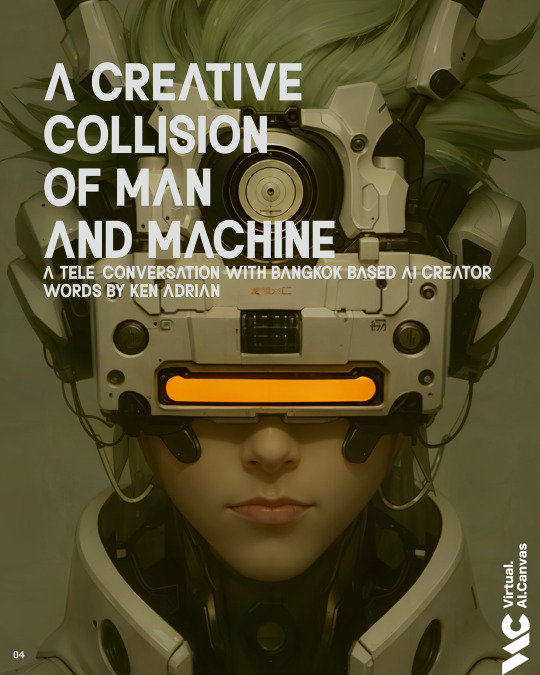
The Controversy of AI Art
In the neon-lit world of cyberpunk imagery, where futuristic landscapes of dystopian cities spread out and mechanized beings intertwine between human and robot, one artist has made his mark using a tool that is as controversial as it is revolutionary - Artificial Intelligence or more popular with the acronym AI. Kulthavach Kultanan, is also known as Duang, but more popular in the AI creator community with the nickname Virtual.AI.Canvas. Duang is not just a creator but also a visionary who sees artificial intelligence as an extension of human artistry rather than a threat to it.
The rise of AI-generated art has ignited heated debates across creative industries. Some hail it as a breakthrough that democratizes artistic expression, while others fear it signals the end of traditional artistry and craftsmanship. Duang, however, stands firmly in the former camp. “I think AI is an opportunity for us to surpass our own limitations and achieve far more than we could before,” he explains. Having worked in the graphic design field and currently serving as a Creative Director in advertising, he has experienced firsthand how technology continues to transform the creative process. “The arrival of AI has helped make my work easier and faster in some cases. It allows me to effortlessly create images that combine two different concepts together. I can now generate that looks like 3D renders by myself, whereas before, I would have needed to find someone else to help with that process.”
The statement obviously also raises a question, moreover, a controversy about whether AI will replace humans or not. For him, the fear that the rise of AI technology will erase jobs is not new. “It’s not just with AI, with every wave of innovation, certain jobs disappear, but new ones emerge”. And I couldn’t agree more with Duang’s opinion.
Over the long span of human civilization, we have seen various technological revolutions that have replaced manual labor previously performed by humans and animals. The invention of the steam engine by James Watt has enabled humans to invent various types of other technological products that replace manual labor done by humans and animals. Locomotive trains replaced horse-drawn carriages, and steamboats and steamships replaced human labor in the world of maritime and shipping. Everything that drove the industrial revolution around the 17th and 18th century, which fundamentally altered the industrial landscapes. But this time we are seeing a very fundamental transition of change in the creative industries. There is a fear of AI technology that will replace human labor and artistry in the creative field. For a moment, I remembered the Daguerreotype process, invented in 1837 by Louis Jacques Mandé Daguerre, which was the first successful photographic process and helped replace painting for portraiture. The photography invention changed the relationship between reality and its representation, which encouraged painters to explore new directions that focus emotions, colors and shapes, and also the subconscious mind. The result is various genres in the art world, such as impressionism, expressionism, surrealism, cubism, and many more. In the case of AI technology, I believe that it will not just encourage many creative workers to focus on such new things, but also direct them to such new levels. For example, 3D illustration. AI technology can create 3D models, but mostly without the highest levels of artistry details and accuracy of concepts. Usually AI creates generic 3D models which need more tweaking by the human touch. And I believe that this is an opportunity. 3D artists should focus on the quality of details and the artistry accuracy of concepts, which mostly can’t be done by an AI, and not just doing generic 3D stuffs which AI can be easily created by AI. It is a bittersweet relationship between the art or creative world and technology that happened centuries ago. Technology invention, like Alvin Toffler once said, will disrupt, enhance, and change many things in various sectors of everyday human life, including the world of art and the creative industry. Realizing that, Duang continued “AI doesn’t replace creativity; it enhances it. I believe that the advent of AI technology, especially AI generative image, will serve as a powerful tool for skilled individuals to amplify their abilities even further.” An opinion that is in line with the views of Charles Lucima, a street photographer I once met in Taipei some time ago. read more of Duang's story on the magazine Download here AIDEA Magazine #1 Edition
2 notes
·
View notes
Text

i was thinking to make a Ultra beast related contest. you are gonna make a ultrabeast based on these 4 prompts. here it the explained prompts.
1-plasma/energy.
2-Death/spooky stuff.
3-crystals/cubism.
4-Futurism/alien stuff.
it has no deadline. i just wanted to make this for fun.
2 notes
·
View notes
Text

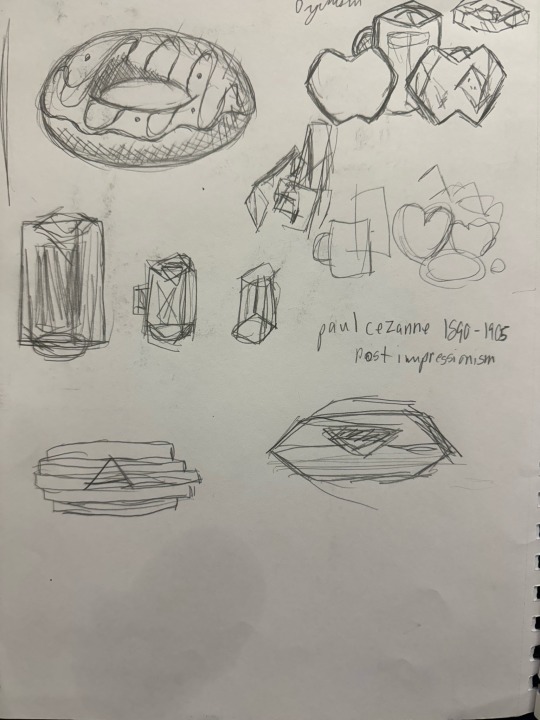

Sketches from/for class
We’re working on a cardboard project to try for cubism, and I chose a bank teller’s lamp TT-TT while everyone chose way smaller items arghhhhg
First sketch is for our theme stuff and Im trying to represent disconnect/distance but idk if Im rlly doing that, erm i think I need to start explaining my work
#artists on tumblr#my art#artwork#thumbnail sketch#pencil sketch#pencil#pencil drawing#sketches#sketching#idk#idk what im doing#why are there tags for perfect body parts#OHHH I REWATCHED ARCANE AND THE NEW SEASON AND ITS SO GOOD AGHHH#I need to post personal stuff and not school stuff whoops
2 notes
·
View notes
Text
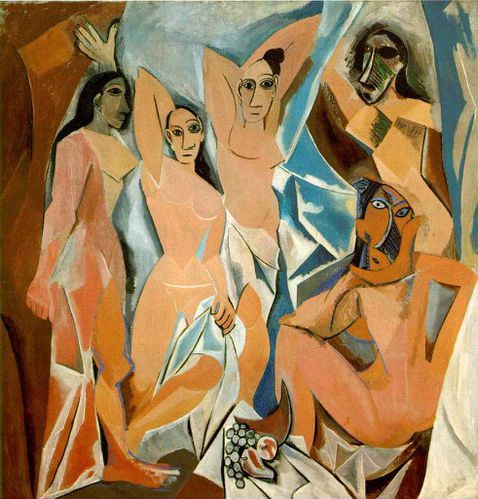
What brings together, modernizes and unites all these arts of the past and today? Heidegger says about a painting by Van Gogh, "In the vicinity of the work, we are also in a different place from where we always are", "Thus, art is the formation and emergence of truth."
The problem is not a purely aesthetic effort, but a philosophical effort about the meaning of life. All arts are brought under the same light.
After assimilating the forms, they now want to identify with their souls. This is permissible for artists, and only they can do this. Picasso, who was one of the first to understand this, when he first saw the African masks, he felt their filth, their disgust, their smell, his own loneliness among them, but his inability to leave, his ability to stay there, his feeling that something important was happening to him, the first official painting of cubism, ''Les Demoiselles D'Avignon''. He explains how it came to him like a revelation that day, as if he were giving a statement to Malraux.
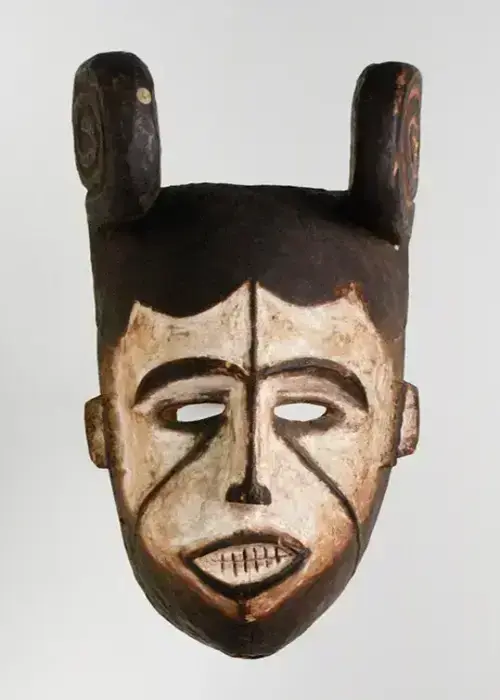
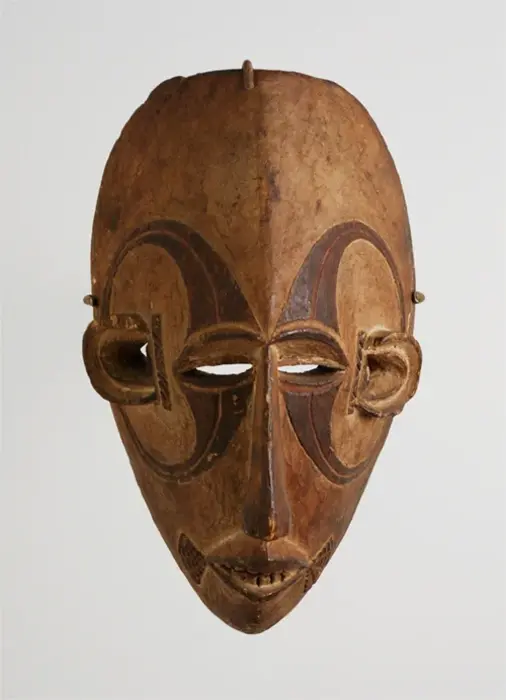
Geçmişteki ve günümüzdeki tüm bu sanatları bir araya getiren, modernleştiren ve birleştiren şey nedir? Heidegger, Van Gogh'un bir tablosu hakkında şöyle diyor: "Yapıtın yakınında biz de her zaman bulunduğumuz yerden farklı bir yerdeyiz", "Dolayısıyla sanat, hakikatin oluşumu ve ortaya çıkışıdır."
Sorun salt estetik bir çaba değil, yaşamın anlamına dair felsefi bir çabadır. Bütün sanatlar aynı ışık altında toplanıyor.
Formları özümsedikten sonra artık ruhlarıyla özdeşleşmek istiyorlar. Bu, sanatçılar için caizdir ve bunu ancak onlar yapabilir. Bunu ilk anlayanlardan biri olan Picasso, Afrika maskelerini ilk gördüğünde onların pisliğini, tiksintilerini, kokularını, aralarındaki kendi yalnızlığını ama gidemeyişini, orada kalabilme becerisini, acısını hissetmişti. başına önemli bir şey geldiğini hissederek kübizmin ilk resmi tablosu olan Les Demoiselles D'Avignon'u yaptı. O gün bunun kendisine nasıl bir vahiy gibi geldiğini, sanki Malraux'ya bir ifade veriyormuş gibi anlatıyor.
*Uluç, Ömer. ''Çıkartmalar''. Gergedan, 1/7, (Eylül 1987): 52 *Images
3 notes
·
View notes
Text
Ezra Pound the best craftsman


Ezra Pound the best craftsman Ezra Pound the best craftsman as Eliot called him, an article that synthetically explains the linguistic art and poetics of this great poet, with some examples of his writing style and deep literary meaning. I have never known anyone worth a damn who wasn't irascible. Ezra Pound I guess the definition of a lunatic is a man surrounded by them. Ezra Pound A slave is one who waits for someone to come and free him. Ezra Pound The real trouble with war (modern war) is that it gives no one a chance to kill the right people. Ezra Pound I could I trust starve like a gentleman. It's listed as part of the poetic training, you know. Ezra Pound No man understands a deep book until he has seen and lived at least part of its contents. Ezra Pound For Ezra Pound il miglior fabbro. The dedication is drawn from The Divine Comedy, the 14th century epic poem by Dante. The Divine Comedy is divided into three parts - Inferno, Purgatorio, and Paradiso - describing Dante's journey through Hell, Purgatory, and finally Paradise. Eliot returns to this poem throughout The Waste Land. Here, the dedication translates as “the better craftsman,” a reference to Canto 26 of the Purgatorio. Dante refers to the poet Arnault Daniel, but Eliot passes the compliment on to Pound, who helped edit The Waste Land. Eliot returns to the same canto in line 428. More context, from the Cotter translation of the Purgatorio: “O brother, the one I point to with my finger,” He spoke, and pointed to a soul in front, “Was a better craftsman of the mother tongue.” This information is based on a footnote from North (2001). For more on Pound's contributions, see the annotated manuscript of The Waste Land in Eliot (1971). Ezra Weston Loomis Pound was an American expatriate poet, critic and intellectual who was a major figure of the Modernist movement in early-to-mid 20th century poetry. Born in Halley, Idaho, (1885-1972) Pound spent most of his life in Europe. In 1908, in his mid-twenties, he went to London because he wanted to meet the greatest living poet, W.B. Yeats, settled there and became a central figure in the literary and artistic world. He founded and led a poetic movement called "Imagism", which reacted against 'Romanticism' and contributed greatly to the development of "Modernism". For some time he was also involved in "Vorticism", an art movement initiated in 1913 by Wyndham Lewis, which combined cubism and the celebration of the energy and speed of the machine age, very much like Futurism in Italy. In 1909 he published Personae, a collection of poems after the manner of the Victorian poet Robert Browning, whose dramatic monologue technique he employed to speak through the voice of others. A "persona" was the mask worn by Roman actors, and Pound used the mask to avoid subjectivity, which the imagists objected to in Romantic poetry. Gradually, Pound started moving away from the constraints of Imagism, and translated from Anglo Saxon and Chinese verse to explore different forms. In 1917 he also started writing the Cantos, a series of poems inspired by Dante's Divine Comedy and Homer's Odyssey, which he would work on for the rest of his life, while Hugh Selwyn Mauberley (1920) perhaps the first great modernist poem, attacks the destruction of the First World War and initiates one of Pound's main themes: the relationship between civilization and its economic and social basis. From 1920 he lived in Paris with his wife and became part of the new literary scene with expatriate Americans like Gertrude Stein and Ernest Hemingway. In Paris he also met James Joyce, then an obscure writer, and helped him publish Ulysses, which had censorship problems in England.
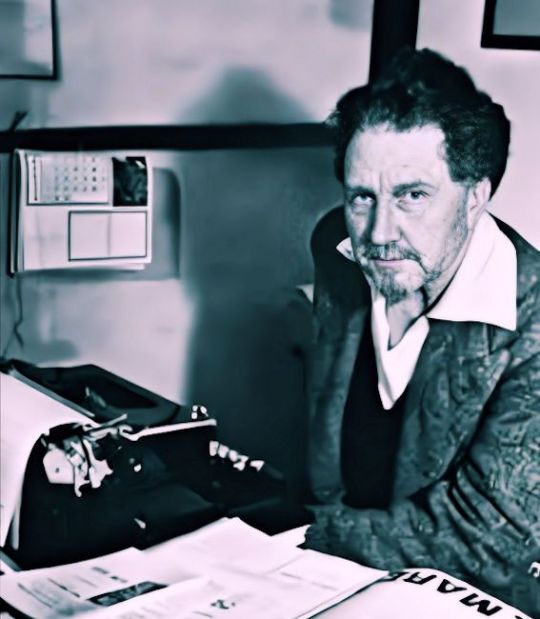
The art of Ezra Pound In 1929 Pound settled in Rapallo, Italy. He became increasingly concerned with the decline of Western civilization and with the social basis of art in what he believed to be a degenerate economic system. He studied the history of Italian Medieval and Renaissance states and found that Italy had in the past created the ideal conditions for the flowering of great art, while he associated modern credit capitalism with the social and spiritual decline of the present. Unfortunately, Pound's dislike of capitalism led him to Fascism and to Mussolini, who was himself anti-capitalist and who persecuted the Jews, associated with money-lending since the Middle Ages. During the Second World War he made a series of propagandist broadcasts over Radio Rome for which he was later tried in the United States, and confined for 12 years in a hospital for the insane. When he was released, he returned to Italy and died in Venice in 1972. With the Imagist movement, Americans poetry became international, and its leaders, the American Ezra Pound and T.S. Eliot, also became the leaders of European poetry. Imagism as such had a short life-span. But it was to become the most influential poetic movement of the century, just as Pound is now considered one of the most influential Modernist poets. Pound was also a generous encourager of other poets and writers; he edited The Waste Land and published Joyce's Ulysses. Through his translations and essays he made known to English-speaking readers Provencal poetry, the Italian poets of the Stil novo, Japanese dramatic literature and Chinese classical poetry. Finally, his critical essays con-tributed to the definition of 'Modernism' as a movement and introduced new standards of objectivity in the evaluation of literature. The Modern Age Cantos Imagism When Pound went to London he made common cause with a small group led by the philosopher T.H. Hume. They called themselves imagists and announced a new kind of poetry, which Pound summarized in a Manifesto: 1) To use the language of common speech, but to em-ploy also the exact word, not the merely decorative word. 2) To create new rhythms - as the expression of new moods. We do not insist on 'free verse' as the only method of writing poetry... We do believe that the in-dividuality of a poem may often be better expressed in free verse than in conventional forms. 3) To allow absolute freedom in the choice of subject. 4) To present an image (hence the name 'Imagist'). We are not a school of painters, but we believe that poetry should render particulars exactly and not deal in vague generalities, however magnificent and sonorous. 5) To produce poetry that is hard and clear, never blurred or indefinite. 6. Finally, most of us believe that concentration is the very essence of poetry. A multicultural collection of poems The following poem by Pound has become famous as an example of the principles declared in the Manifesto. The poem describes a moment of intense emotion at seeing beautiful faces in a station of the Paris underground. The images condense the emotion in two parallel pictures with great economy of words, and using the language of common speech: In a Station of the Metro The apparition of these faces in the crowd; Petals on a wet, black bough. From "Poems of Lustra", 1913 In 1914 Pound abandoned the movement. Imagism was only a step on the way to Modernism, because images alone offered too limited possibilities for poetry. But its insistence on economy and free-verse continued to be valuable. Starting in 1917, Pound worked on the Cantos for the rest of his life. The Cantos, 140 loosely connected poems, have their source in Dante's Divine Comedy, as their name declares, and on the Odyssey, a model for Pound's exploration of contemporary civilization. Some of Dante's persons, like Brunetto Latini, figure in them, while many episodes have the Odyssey as a starting point. Pound shows a vivid awareness of the past. Like most great modernists (Yeats and Eliot), he looked into the past for useful literary material, for principles of conduct and for comparison with the present. As a result the Cantos are a multi-cultural work: besides the references to Dante and the Odyssey, there are also references to the Old Testament, Rimini in the 15th century under Sigismondo Malatesta, whom he considered the ideal, benevolent despot, Confucius, the United States at the time of Jefferson, Medieval England and Provence, to mention but a few. One of the main preoccupations expressed in the Cantos is economic. Pound believed that usury was at the basis of contemporary credit capitalism, which he considered the source of cultural and social disintegration. The usurer, be it an individual money-lender or a bank, charges interest, and interest, which is not worked for, creates false values, not just in economics, but also in life and art. The groups of cantos concerned with usury were written in the 1930s, when Pound was in Rapallo. In Canto XI of the Inferno, Dante asks Virgilio why usury is considered one of the most serious crimes against nature. Virgilio answers that nature takes its origin directly from God's mind and art (doings). Humanity imitates nature and art (work), like a schoolboy imitating his master. But usurers despise nature and art and refuse to live by the fruits of nature and of work. They live by the rates of interest that come from money-lending: "Filosofia, mi disse, a chi la' ntende nota, non pure in una sola parte, come natura to suo corso prende dal divino intelletto e da sua arte; e se tu ben la tua Fisica note, tu troverai, non dopo molte carte, che l'arte vostra quella, quanto pote, segue, come'l maestro fa'l discente; si che vostr'arte a Dio quasi e nipote. Da queste due se tu ti rechi a mente to Genesi dal principio, convene prender sua vita e avanzar la gente; e perche l'usuriere altra via tene, per se natura e per la sua seguace, dispregia, poi ch'in altro pon la speme." Philosophy, he (Virgil) told me, for those who understand it, explains in more than one place, that Nature takes its origin directly from God's Mind and from his Art (doings); and if you read Aristotles's Physics, you'll soon discover that your (human) art imitates Nature as it can, like a schoolboy his master. So that your art can be called God's grandchild. From these two (Art and Nature) if you remember the beginning of Genesis, man should get his bread and promote prosperity to all. But the usurer chooses another way; he despises Nature and Art because he places his hopes elsewhere. With usura Canto XLV With usura hath no man a house of good stone each block cut smooth and well fitting that design might cover their face, with usura hath no man a painted paradise on his church wall harpes et luz or where virgin receiveth message and halo projects from incision, with usura seeth no man Gonzaga his heirs and his concubines no picture is made to endure nor to live with but it is made to sell and sell quickly with usura, sin against nature, is thy bread ever more of stale rags is thy bread dry as paper, with no mountain wheat, no strong flour with usura the line grows thick with usura is no clear demarcation and no man can find site for his dwelling. Stonecutter is kept from his stone weaver is kept from his loom WITH USURA wool comes not to market sheep bringeth no gain with usura Usura is a murrain, usura blunteth the needle in the maid’s hand and stoppeth the spinner’s cunning. Pietro Lombardo came not by usura Duccio came not by usura nor Pier della Francesca; Zuan Bellin’ not by usura nor was ‘La Calunnia’ painted. Came not by usura Angelico; came not Ambrogio Praedis, Came no church of cut stone signed: Adamo me fecit. Not by usura St. Trophime Not by usura Saint Hilaire, Usura rusteth the chisel It rusteth the craft and the craftsman It gnaweth the thread in the loom None learneth to weave gold in her pattern; Azure hath a canker by usura; cramoisi is unbroidered Emerald findeth no Memling Usura slayeth the child in the womb It stayeth the young man’s courting It hath brought palsey to bed, lyeth between the young bride and her bridegroom CONTRA NATURAM They have brought whores for Eleusis Corpses are set to banquet at behest of usura. N.B. Usury: A charge for the use of purchasing power, levied without regard to production; often without regard to the possibilities of production. (Hence the failure of the Medici bank.) Pound's The Cantos contains music and bears a title that could be translated as The Songs - although it never is. Pound's ear was tuned to the motz et sons of troubadour poetry where, as musicologist John Stevens has noted, "melody and poem existed in a state of the closest symbiosis, obeying the same laws and striving in their different media for the same sound-ideal - armonia." In his essays, Pound wrote of rhythm as "the hardest quality of a man's style to counterfeit." He challenged young poets to train their ear with translation work to learn how the choice of words and the movement of the words combined. But having translated texts from 10 different languages into English, Pound found that translation did not always serve the poetry: "The grand bogies for young men who want really to learn strophe writing are Catullus and François Villon. I personally have been reduced to setting them to music as I cannot translate them." While he habitually wrote out verse rhythms as musical lines, Pound did not set his own poetry to music. You can also read: Ezra Pound quotes and aphorisms Ezra Pound thoughts and reflections T.S. Eliot quotes and aphorisms T.S. Eliot thoughts and reflections Quotes by authors Quotes by arguments Essays with quotes Thoughts and reflections News and events Read the full article
2 notes
·
View notes
Text
Wanna make cool emotes that are animated but don't really get Live2D Cubism? Check out my video where I explain how I do it so you can too!
#twitch#emotes#overlay#twitchoverlay#twitchemotes#vtuber#envtuber#artvtuber#vtuberuprising#artistsontumblr
2 notes
·
View notes